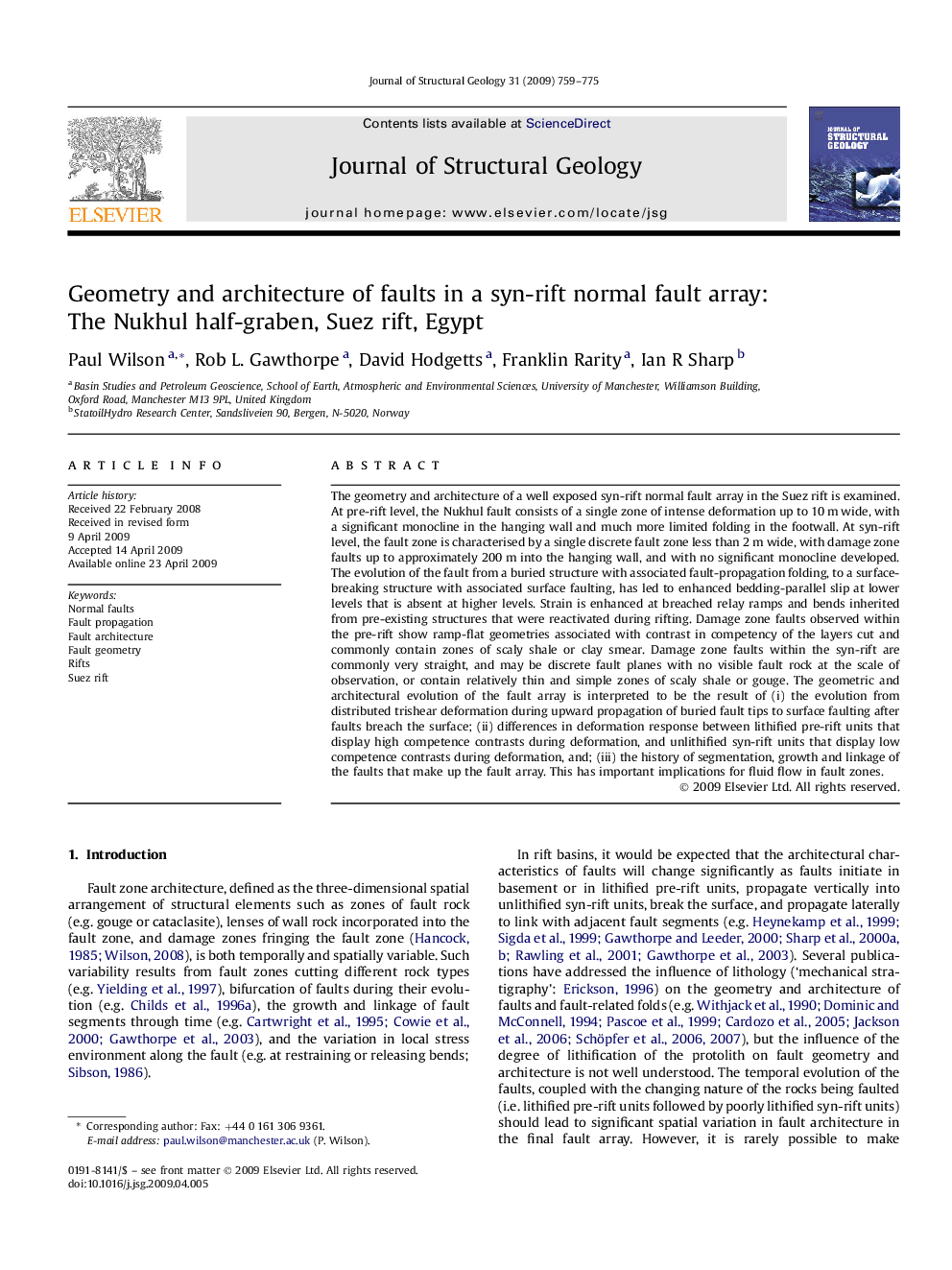| کد مقاله | کد نشریه | سال انتشار | مقاله انگلیسی | نسخه تمام متن |
|---|---|---|---|---|
| 4733509 | 1357030 | 2009 | 17 صفحه PDF | دانلود رایگان |

The geometry and architecture of a well exposed syn-rift normal fault array in the Suez rift is examined. At pre-rift level, the Nukhul fault consists of a single zone of intense deformation up to 10 m wide, with a significant monocline in the hanging wall and much more limited folding in the footwall. At syn-rift level, the fault zone is characterised by a single discrete fault zone less than 2 m wide, with damage zone faults up to approximately 200 m into the hanging wall, and with no significant monocline developed. The evolution of the fault from a buried structure with associated fault-propagation folding, to a surface-breaking structure with associated surface faulting, has led to enhanced bedding-parallel slip at lower levels that is absent at higher levels. Strain is enhanced at breached relay ramps and bends inherited from pre-existing structures that were reactivated during rifting. Damage zone faults observed within the pre-rift show ramp-flat geometries associated with contrast in competency of the layers cut and commonly contain zones of scaly shale or clay smear. Damage zone faults within the syn-rift are commonly very straight, and may be discrete fault planes with no visible fault rock at the scale of observation, or contain relatively thin and simple zones of scaly shale or gouge. The geometric and architectural evolution of the fault array is interpreted to be the result of (i) the evolution from distributed trishear deformation during upward propagation of buried fault tips to surface faulting after faults breach the surface; (ii) differences in deformation response between lithified pre-rift units that display high competence contrasts during deformation, and unlithified syn-rift units that display low competence contrasts during deformation, and; (iii) the history of segmentation, growth and linkage of the faults that make up the fault array. This has important implications for fluid flow in fault zones.
Journal: Journal of Structural Geology - Volume 31, Issue 8, August 2009, Pages 759–775